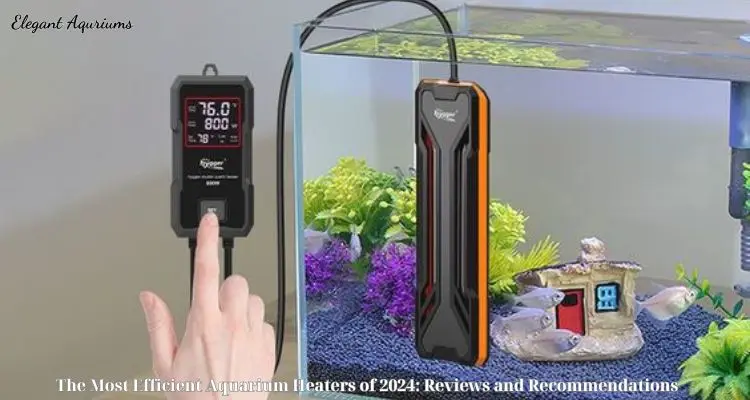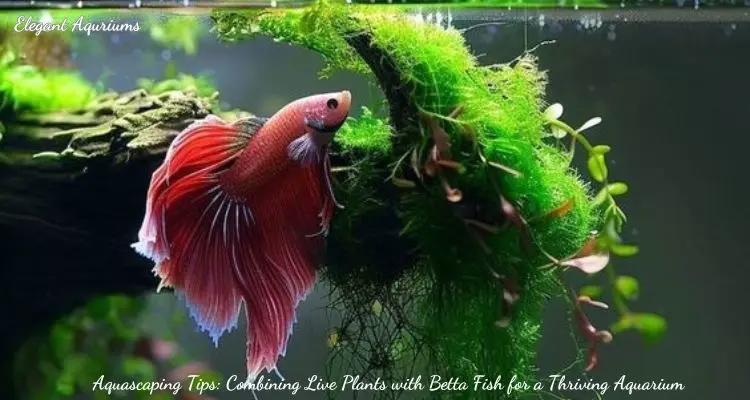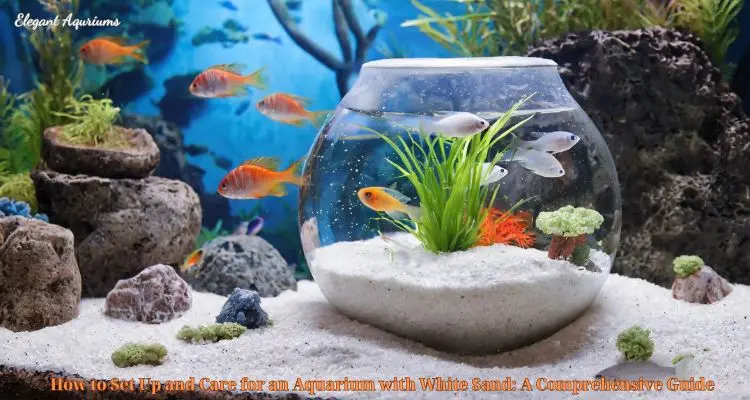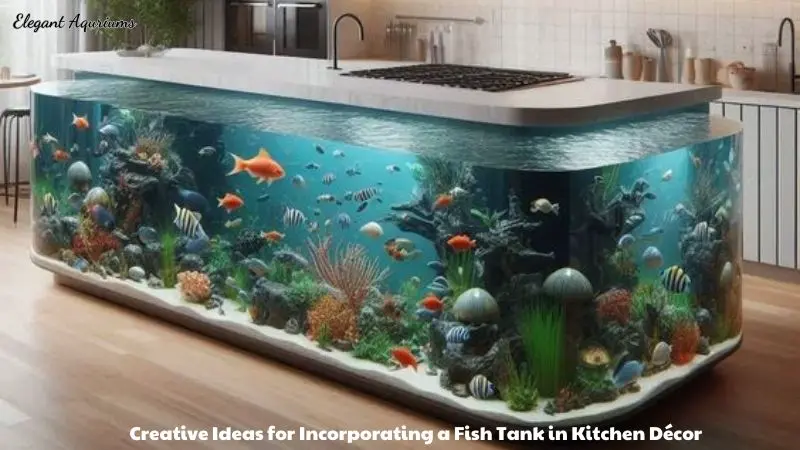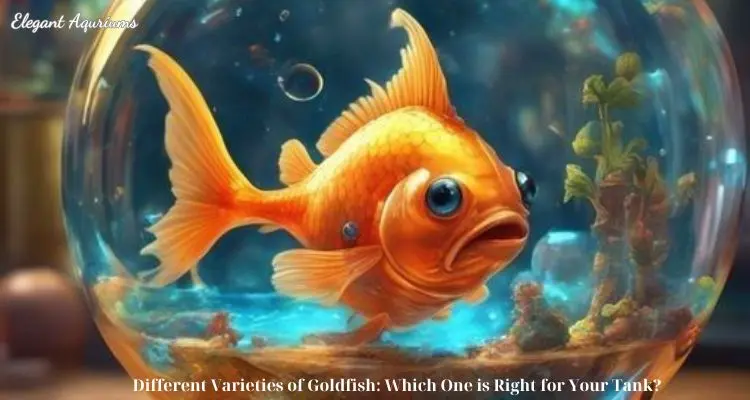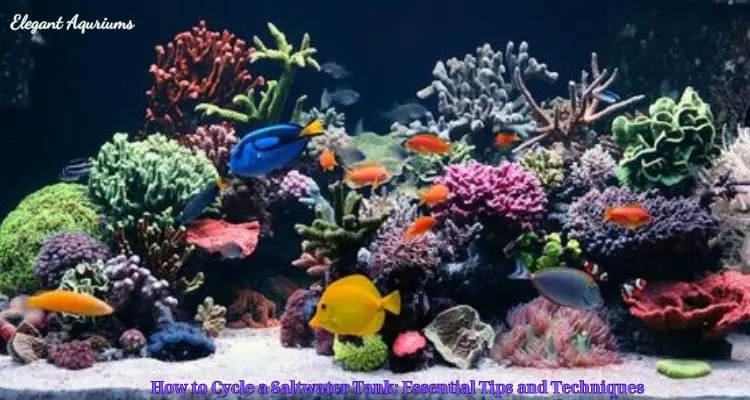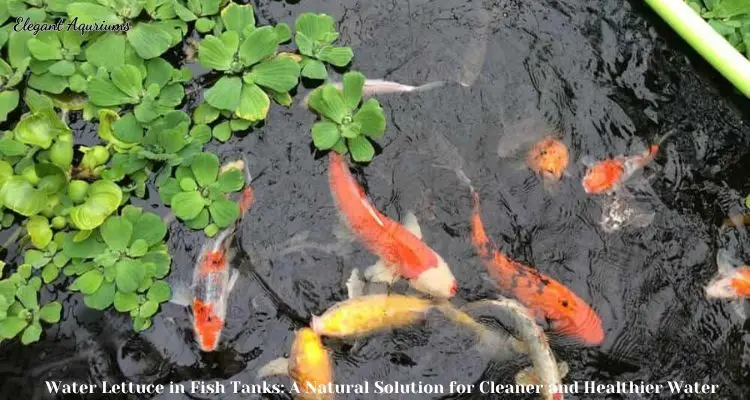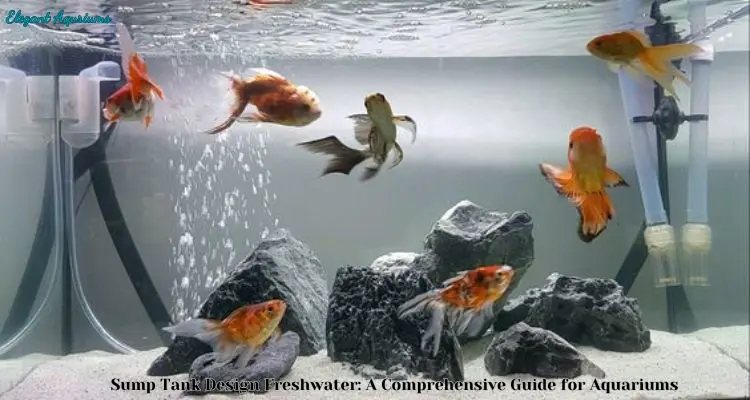Fish tank and equipment
The Most Efficient Aquarium Heaters of 2024: Reviews and Recommendations
Maintaining a stable and appropriate temperature in your aquarium is essential for the health and well-being of your aquatic life. The efficiency of your aquarium heater plays a critical role in achieving this. A well-chosen heater not only ensures that your tank remains at the optimal temperature but also helps in energy conservation and reduces operational costs. This comprehensive guide, Elegant Aquriums will delve into the most efficient aquarium heaters of 2024, offering detailed reviews and recommendations to help you make an informed decision.
Understanding Aquarium Heater Efficiency
Energy Savings
An efficient aquarium heater consumes less electricity while maintaining the desired water temperature. This efficiency translates into lower energy bills and less environmental impact. As aquarium heaters can run continuously, their energy consumption can add up, making efficiency a key factor in long-term savings.
Temperature Stability
A heater’s efficiency impacts its ability to maintain a consistent temperature. Fluctuations can stress fish and disrupt the balance of the aquarium ecosystem, leading to potential health issues. Efficient heaters provide stable and accurate temperature control, which is crucial for the well-being of your aquatic life.
Longevity and Reliability
Efficient heaters often come with higher build quality and advanced technology, which contribute to their durability and reliability. They are less likely to malfunction or require frequent replacements, providing consistent performance over time.
Reduced Heat Output
Efficient heaters minimize heat wastage, ensuring that most of the energy consumed is directly used for heating the water. This reduces the need for additional cooling systems and helps maintain a balanced environment in your tank.
Key Features of Efficient Aquarium Heaters
When selecting the most efficient aquarium heater, consider the following features:
Wattage and Size
The wattage of a heater should match the size of your aquarium. Generally, you need approximately 5 watts per gallon of water. However, this can vary based on tank location, room temperature, and insulation. It’s crucial to select a heater with the appropriate wattage to ensure efficient and effective heating.
Temperature Control
Advanced temperature control is vital for maintaining a stable environment. Look for heaters with precise temperature settings, preferably with digital displays. Accurate controls allow you to set and maintain the ideal temperature for your aquarium’s inhabitants.
Build Quality
The construction material of the heater affects its efficiency and durability. Heaters made from high-quality materials, such as titanium or shatterproof glass, tend to be more reliable and longer-lasting. Durable construction prevents leaks, breakage, and other potential issues.
Safety Features
Safety features are essential to prevent accidents and ensure the heater operates reliably. Look for heaters with automatic shut-off mechanisms, overheat protection, and waterproof designs to avoid potential hazards.
Ease of Installation and Maintenance
Ease of installation and maintenance can significantly impact the user experience. Choose heaters that are straightforward to install and maintain. Models with suction cups or mounting brackets are convenient for easy setup and cleaning.
Reviews of the Most Efficient Aquarium Heaters of 2024
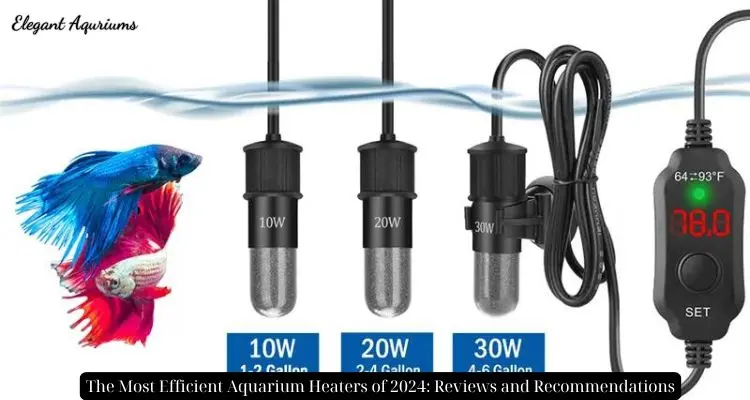
Eheim Jager TruTemp Aquarium Heater
Overview: The Eheim Jager TruTemp is renowned for its efficiency and precision. It is available in various sizes, making it suitable for different tank volumes.
Features:
- Precision Temperature Control: Features a built-in thermometer and adjustable temperature settings for accurate control.
- High-Quality Construction: Made from shatterproof glass with a thermal protection system to prevent overheating.
- Efficiency: Utilizes advanced heating technology for stable and consistent heating.
Pros:
- Reliable and accurate temperature regulation.
- Durable and long-lasting.
- Suitable for both freshwater and marine aquariums.
Cons:
- Higher initial cost compared to some other models.
- Requires calibration for precise temperature settings.
The Eheim Jager TruTemp is ideal for those seeking a reliable and accurate heater. Its high-quality construction and precision make it a top choice for both beginners and experienced aquarists.
Hydor Theo Heater
Overview: The Hydor Theo Heater is a compact and efficient heater designed for smaller to medium-sized tanks. It offers excellent performance and ease of use.
Features:
- Compact Design: Sleek and small, making it suitable for tight spaces.
- Adjustable Temperature Dial: Allows easy temperature adjustments with a built-in thermometer.
- Shatterproof Glass: Durable construction with a secure mounting system.
Pros:
- Easy to install and use.
- Ideal for smaller tanks.
- Provides reliable temperature maintenance.
Cons:
- Not suitable for large tanks.
- Limited to basic temperature settings.
The Hydor Theo Heater is perfect for those with smaller tanks who need an efficient and compact heating solution. Its simplicity and reliability make it a great choice for many aquarium setups.
Finnex HMO Titanium Heater
Overview: The Finnex HMO Titanium Heater is a high-performance heater known for its durability and efficiency. It is suitable for larger tanks and provides precise temperature control.
Features:
- Titanium Construction: Highly durable and resistant to breakage.
- Digital Temperature Control: Allows for precise adjustments and monitoring.
- Efficiency: Designed to provide consistent heating with minimal energy consumption.
Pros:
- Long-lasting and durable titanium construction.
- Accurate digital controls for precise temperature setting.
- Suitable for larger aquariums.
Cons:
- Higher price point compared to other models.
- Requires a separate controller for temperature adjustments.
The Finnex HMO Titanium Heater is ideal for larger tanks and those who require precise temperature control. Its durable construction and efficiency make it a valuable investment for serious aquarists.
Aqua Top Submersible Heater
Overview: The Aqua Top Submersible Heater is a budget-friendly option that offers efficiency and reliable performance. It is suitable for a range of tank sizes and provides effective heating.
Features:
- Adjustable Temperature Dial: Allows for easy temperature setting.
- Submersible Design: Can be fully submerged for optimal heating.
- Durable Glass Construction: Features a secure mounting system.
Pros:
- Affordable and cost-effective.
- Simple and easy to use.
- Suitable for various tank sizes.
Cons:
- Basic design with fewer advanced features.
- May require frequent adjustments for temperature accuracy.
The Aqua Top Submersible Heater is an excellent choice for those on a budget who still need an efficient and reliable heater. Its simplicity and affordability make it a practical option for many aquarium enthusiasts.
Cobalt Aquatics Neo-Therm Heater
Overview: The Cobalt Aquatics Neo-Therm Heater is known for its sleek design and advanced technology. It is suitable for various tank sizes and offers efficient heating.
Features:
- Digital Display: Provides precise temperature readings and adjustments.
- Thermal Efficiency: Minimizes energy consumption while maintaining consistent heat.
- High-Quality Construction: Shatterproof and durable.
Pros:
- Accurate temperature control with a digital display.
- Energy-efficient design.
- Reliable and durable construction.
Cons:
- Higher cost compared to basic models.
- Some users may find the digital controls less intuitive.
The Cobalt Aquatics Neo-Therm Heater is ideal for those who prefer modern technology and energy efficiency. Its digital display and advanced features make it a top choice for many aquariums.
Choosing the Right Heater for Your Aquarium
Determine the Size of Your Tank
Match the heater’s wattage to your tank’s size. For smaller tanks, a lower wattage heater is sufficient, while larger tanks require more powerful heaters. As a general guideline, aim for 5 watts per gallon of water. However, consider factors such as room temperature and insulation when selecting the appropriate wattage.
Assess Your Budget
Higher efficiency often comes with a higher price tag. While more efficient heaters can save you money on energy bills in the long run, balance your budget with the features and performance you need. Consider both the initial cost and potential long-term savings when making your decision.
Consider Your Tank’s Environment
Evaluate the location and conditions of your tank. If your aquarium is in a room with fluctuating temperatures or drafts, choose a heater with advanced temperature control and stability features. This will ensure consistent conditions and prevent temperature-related issues.
Look for Additional Features
Consider features such as digital displays, automatic shut-off, and temperature alarms. These features enhance the functionality and safety of your heater. Choose a model with the features that best suit your needs and preferences.
Read Reviews and Seek Recommendations
Consult reviews from other aquarium enthusiasts to gain insights into the performance and reliability of different heaters. Seek recommendations from experienced aquarists to find the best options for your setup. Reviews can provide valuable information about a heater’s efficiency, durability, and ease of use.
Maintenance Tips for Aquarium Heaters
Regular Monitoring
Check the heater and water temperature regularly to ensure it is maintaining the desired settings. Use a reliable thermometer to verify that the heater is performing as expected. Regular monitoring helps prevent temperature fluctuations and ensures a stable environment for your aquatic life.
Clean the Heater
Periodically clean the heater to remove any buildup or algae. Follow the manufacturer’s instructions for cleaning to avoid damaging the heater. Regular cleaning helps maintain the heater’s efficiency and extends its lifespan.
Inspect for Wear and Tear
Regularly inspect the heater for signs of wear or damage. Look for any cracks, leaks, or other issues that could affect its performance. Replace any heaters that show signs of malfunction to ensure safe and effective operation
Ensure Proper Placement
Proper placement of the heater within the tank is crucial for efficient heating. Position the heater in a location where it can distribute heat evenly throughout the aquarium. Avoid placing it near the filter or air pump, as these can create currents that might interfere with the heater’s ability to maintain a consistent temperature. Additionally, ensure that the heater is fully submerged according to the manufacturer’s guidelines to avoid overheating or malfunction.
Follow Manufacturer Instructions
Adhering to the manufacturer’s instructions for installation, operation, and maintenance is essential for ensuring the heater’s efficiency and longevity. Each model may have specific requirements or recommendations, and following these will help you avoid common issues and ensure optimal performance.
Comparing Efficiency: Heater Types and Technologies
Submersible Heaters
Overview: Submersible heaters are designed to be fully immersed in the water, providing efficient and consistent heating. They are typically used in both freshwater and marine aquariums.
Pros:
- Effective Heating: Provides direct heat to the water.
- Space-Efficient: Compact and can be placed out of sight.
- Versatile: Suitable for various tank sizes and types.
Cons:
- Requires Regular Cleaning: Can accumulate algae or debris.
- Placement Limitations: Must be positioned correctly to ensure even heating.
In-Tank Heaters
Overview: In-tank heaters are often equipped with suction cups or mounting brackets that attach to the side of the tank. They are designed to be partially submerged and heat the water through conduction.
Pros:
- Ease of Installation: Simple to install and adjust.
- Compact Design: Does not take up much space inside the tank.
- Visibility: Allows for easy monitoring and adjustment.
Cons:
- Limited Heating Capacity: May not be suitable for larger tanks.
- Possible Disruption: Placement near the tank’s filter or other equipment can affect heating efficiency.
Inline Heaters
Overview: Inline heaters are installed in the filtration system and heat the water as it passes through. They are often used in larger aquariums or in systems with a central filter.
Pros:
- Efficient Heating: Provides consistent temperature control for large tanks.
- Space-Saving: Does not take up space inside the tank.
- Minimal Disruption: Does not affect the aesthetic of the aquarium.
Cons:
- Complex Installation: Requires integration with the filtration system.
- Higher Cost: Generally more expensive than other types of heaters.
Substrate Heaters
Overview: Substrate heaters are placed beneath the substrate of the tank and provide bottom-up heating. They are particularly useful for planted tanks and aquariums with deep substrates.
Pros:
- Promotes Plant Growth: Ideal for tanks with live plants.
- Even Heat Distribution: Provides heat from the bottom up.
- Low Visibility: Hidden beneath the substrate.
Cons:
- Installation Complexity: Requires substrate removal for installation.
- Limited Heating Range: Not suitable for large or high-temperature tanks.
Conclusion
Choosing the most efficient aquarium heater is crucial for maintaining a stable and healthy environment for your aquatic pets. The heaters reviewed here represent some of the best options available in 2024, offering a range of features to suit different needs and budgets. By considering factors such as wattage, temperature control, build quality, and additional features, you can select a heater that provides efficient, reliable, and cost-effective heating for your aquarium. Regular maintenance and careful monitoring will ensure that your heater performs optimally, keeping your aquatic ecosystem thriving.

